Asthma is a disease that begins its critical phase during Winter and Spring. The cold weather in Winter makes the body prone to respiratory infections that can exacerbate asthma, and in Spring, pollen also comes, which is an important hazard for people with allergies and asthma.
But what if you could prepare your body to withstand these environmental aggressors? Even from your home right now?

That’s what you are going to learn. Here are Five Easy steps to use Chinese medicine for asthma at home:
Table of Contents
Why Choosing Chinese Medicine for Asthma
More and more people are choosing natural and holistic methods every day, they are noticing that no matter how many drugs they are using, it just doesn’t get better. Drugs are good for immediate results but don’t address the root cause, they just make damage control.
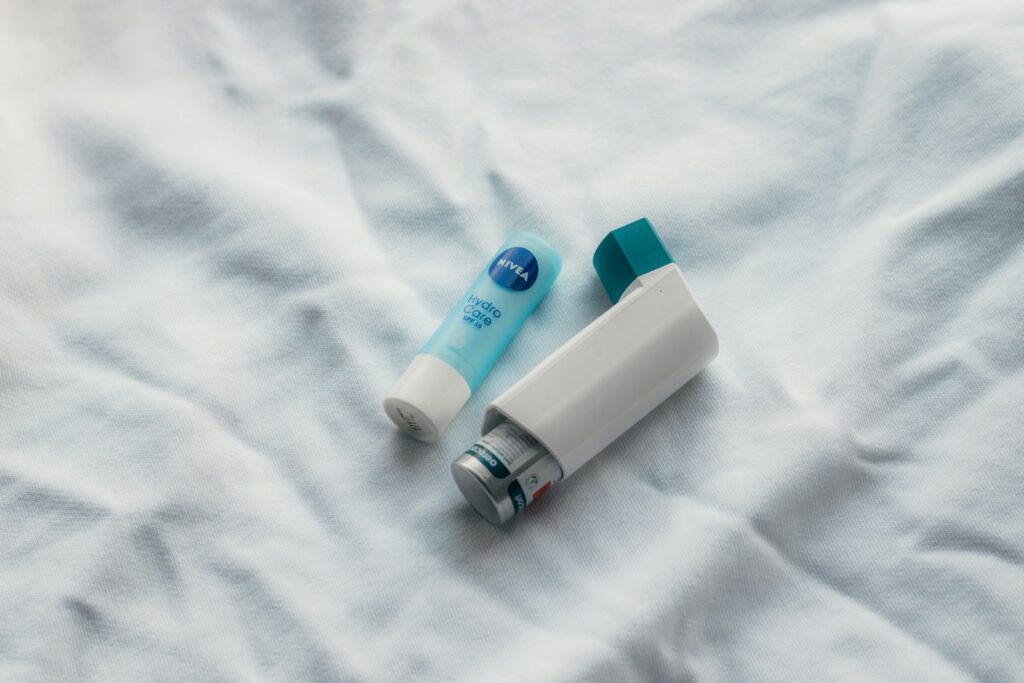
Asthma treatment is no exception.
The treatment of asthma in modern medicine is based on controlling the symptoms and solving the crisis. Your doctor may prescribe you some exercises and a meal plan but it doesn’t get deeper than that.
Traditional Chinese Medicine (TCM) is a holistic practice that offers a new way to look at and treat asthma, it does not focus on a single issue but rather on addressing the whole body to make it capable of healing itself.
It covers both the treatment of asthma crisis as well as a prevention and healing plan so not only you will have better respiratory health, but you will potentially regress your asthma to a more manageable state. I know some cases of people who are completely inhaler-free after years of using TCM for asthma.
Sounds like a good idea, right?
But this is only attainable with consistent treatment and a multi-faceted approach.

TCM covers everything from using Acupuncture points to treat asthma to the proper nutrition to follow as an asthmatic, to a roadmap for better respiratory health.
Now, let’s see what are you focusing on when using Chinese medicine for asthma at home.
Chinese Medicine for Asthma at Home: Treatment goals
When deciding to use Chinese medicine for treating asthma at home, the focus of the treatment will be focused on key objectives: Energizing your Lungs, Reducing Stress, Removing Phlegm, and Dispelling Cold.
There are other objectives but they overlap with these.
Let’s analyze them individually.
Energizing your Lungs
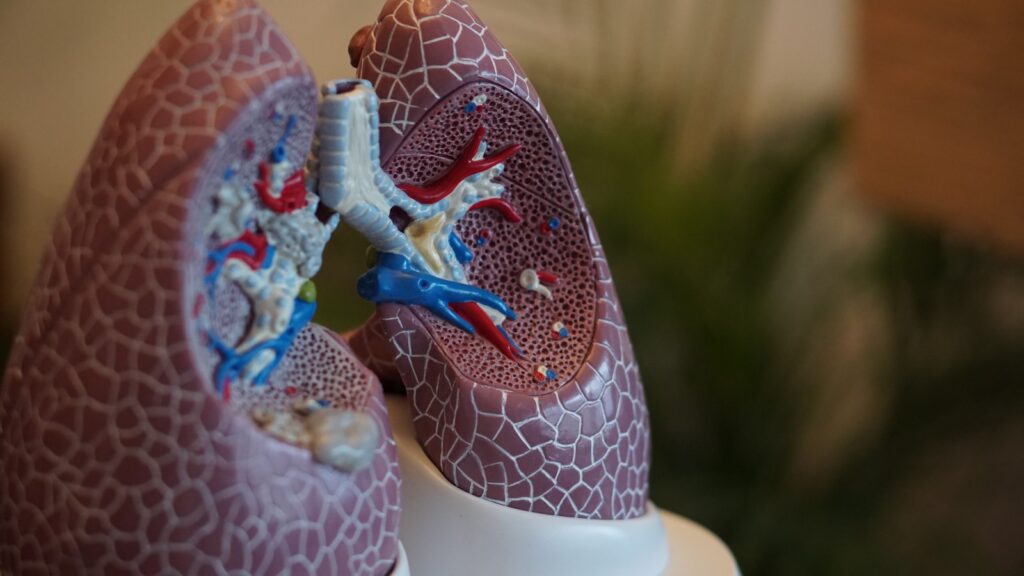
Asthma is a respiratory disease thus the main goal when using TCM for asthma will be to energize and tonify your lungs to make them more resilient to asthma attacks thus reducing the severity of them.
Strengthening your lungs will make them more able to mobilize the phlegm out of your respiratory system, will improve ventilation and oxygenation, and will positively impact other areas of your life like better cardiovascular health.
Reducing Stress
Stress is an often overlooked aspect of asthma. A person with asthma is someone with a constant sense of worry. They worry whether they will suffer from an attack, whether they have their inhaler with them or not.
If they can’t find the inhaler they experience anxiety because they are unprotected against a potential crisis.
The anxiety caused by fear and expectation of a sudden asthma attack is enough to trigger an attack.

This constant worry has two main consequences:
- It creates a state of chronic stress with all of its implications: poor health, impaired cognition, and impaired immunity.
- It strains the Spleen system causing the onset of Dampness and Phlegm.
Reducing stress makes the person mentally stronger and more capable of confronting an attack which in turn reduces the sense of worry thus impeding the creation of Phlegm which leads us to the next goal.
Removing Phlegm
In Traditional Chinese Medicine, asthma is mainly a disharmony pattern of Cold and Phlegm/Dampness. The wet cough and expectoration present in asthmatic crisis is a clear sign of the presence of Phlegm in the Lungs.
The accumulation of Phlegm creates the mucus coating that traps the air inside your lungs causing shortness of breath.
For a deeper dive into Dampness and Phlegm, check out the main article:
Dispelling Cold
As said in the previous point, Asthma is caused by Cold and Phlegm, so you need to address both causes to ensure the treatment is successful. Cold impairs the flow of Qi and Blood making the depuration process and the mobilization of fluids and Phlegm more difficult
Now that you know what the goals are when treating asthma using Chinese Medicine, let’s go through 5 steps you can do from the comfort of your house to begin treating your asthma.
Step 1: Determine your Respiratory Baseline and Keep Track

The first step in your healing journey is to know your current state. This way you have something to compare your progress to and you can assess accordingly.
The very first thing you have to assess, apart from your overall health condition, is your respiratory state. This is done by assessing how much air you can let out in a single breath.
This is an exercise you are going to do every day and keep track of to see your evolution.
Assessing your state allows you to have a clearer vision of how your ventilation is currently doing. While there are functional tests with machines you can get done, they are quite expensive. This tool I’m going to share with you now has no cost.
How to Determine Your Respiratory State:
To do this exercise, you will need to rest for about 10 minutes to achieve the most accurate result that is not influenced by exertion.
Now follow these steps:
- Sit up straight and still and take a deep breath. Don’t force more air in than you can stand.
- Let out the air while saying the Syllable ‘FA’ in an understandable tone.
- Count the time it takes you to run out of breath.
- That is your Respiratory Baseline.
Keep track of your respiratory Baseline daily.
Using the Respiratory Baseline Tracker

You can assess your Respiratory state by yourself and keep track of it in a notebook or a sheet of paper. Or you can use the Respiratory Tracker.
This is a tool I designed to help you develop the habit of tracking your Respiratory state daily. It has a monthly table where you assess your state and fill in the data and the routine you must do depending on your daily results.
You can get your copy of the Respiratory State Tracker and the Asthma Relief Acupoints Chart through this link:
Now that you know your state, let’s see what to do with the results.
Want to learn how to use the Respiratory Tracker?
Check out this Article: How to Use the Asthma Respiratory State Tracker
Step 2: Develop a Morning Acupressure Routine

You should begin your acupressure routine immediately after assessing your daily respiratory state.
Acupressure leverages the knowledge of the acupuncture points and allows you to treat yourself using your hands.
Every day, after waking up and after step 1, select the right points and perform your acupressure routine.
List of Acupuncture Points used in Chinese Medicine for asthma at home:
- Lung 1
- Lung 2
- Large Intestine 4
- Stomach 36
- Kidney 27
- Lung 5
- Spleen 6
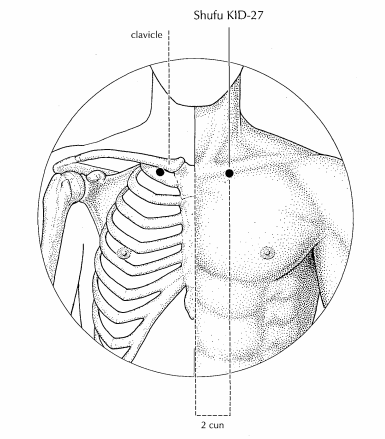
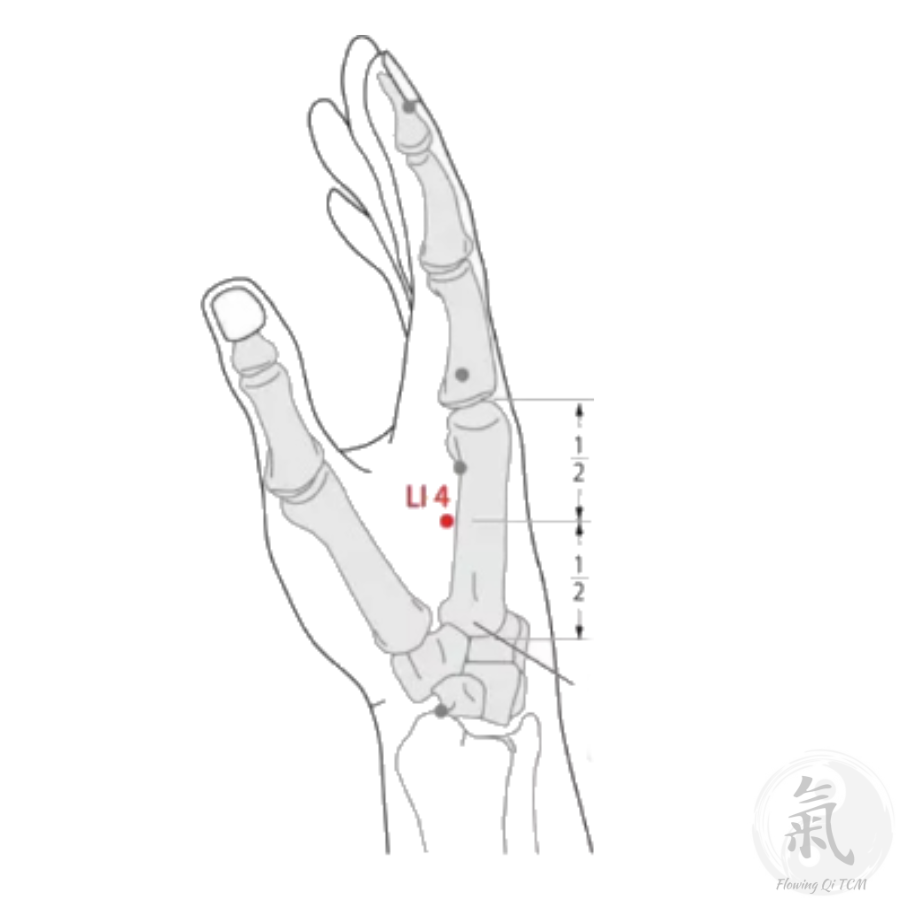
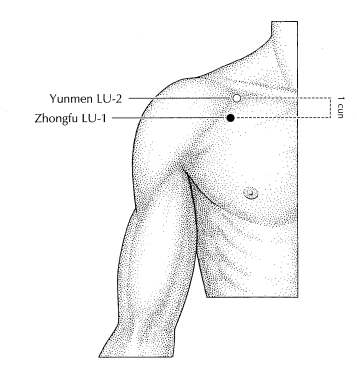
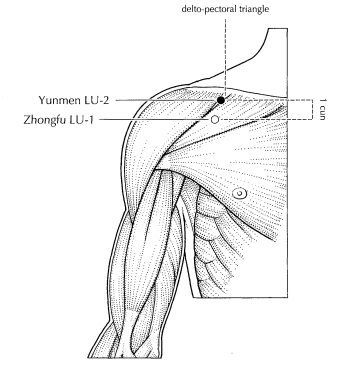
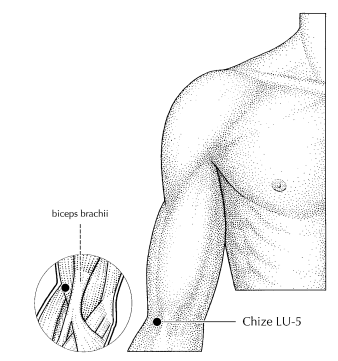


Choose 3 to 5 points for your routine. Stimulate these points by pressing with your thumb and doing circular motions clockwise and counterclockwise. Aim to do 40 for each side.
Some points will be painful. This is an indication of a disturbance in the flow of energy through the meridian, which speaks to the need for stimulation.
All of these points will work directly or indirectly in your lungs. The points located within the Lung Meridian will help strengthen your Lungs and make it more resistant to external aggressors like dust, pollen, and such.
The other points are located along meridians that increase your core temperature, help relieve the asthma crisis, and help energize the Spleen which helps with getting rid of Dampness.
Advantage of a Morning Acupressure Routine

The real value of Chinese medicine is found in prevention and compounding. Traditional Chinese medicine places a high emphasis on preventing the onset of diseases, in the case of asthma, this means preparing yourself for the day beforehand.
How does Acupressure do it?
By stimulating these points you will help boost the flow of Qi and Blood through the meridians and the organ, energizing it and priming it for the day.
This way you are arming your body with the right tools to face the day prepared.
Most people with asthma go out to work every day without preparing their Lungs for the potential hazards.
Which one is going to be more resistant, the prepared or the unprepared one?
Now let’s take it up a notch for even better results.
Step 3: Include Ginger and Pepper into your Diet
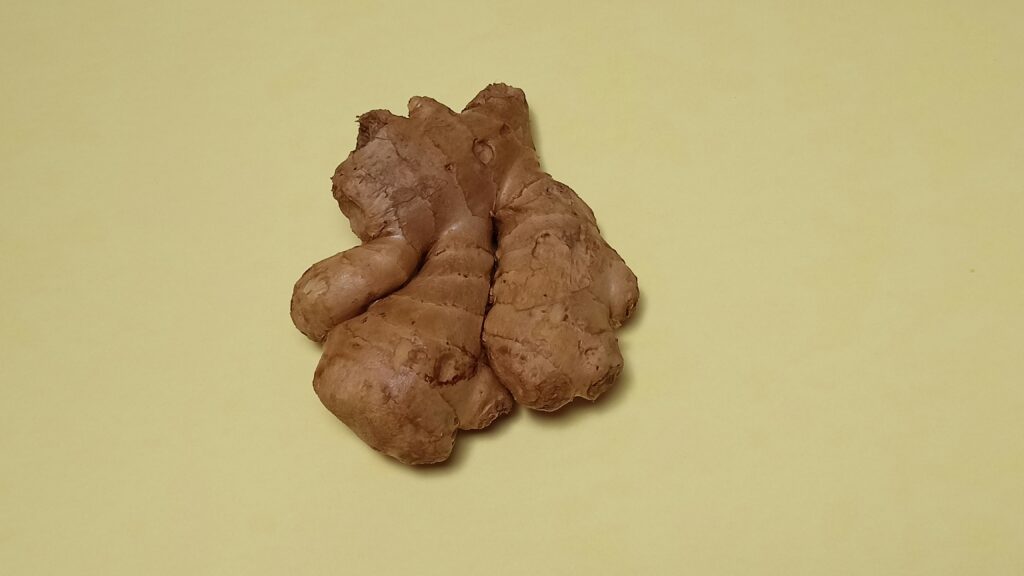
According to the Five Elements theory, the Lungs and the large intestine belong to the same element, which is Metal. This theory explains that the world’s components and processes can be grouped into five main elements containing similar characteristics: fire, Earth, Metal, Wood, and Water.
In the case of the Metal element, the flavor associated with it is Spicy, which means spicy foods will energize and improve Lung and Large intestine health.
This is where Ginger and pepper come, they both have a spicy flavor and also help heat your body which impacts directly in the treatment of asthma: energizing the lungs and getting rid of cold.
You can use them in your meals as regular ingredients, or you can make yourself ginger tea.
Ginger has been shown to have decongestant, anti-inflammatory properties, and helps reduce attenuate airway hyperresponsiveness. All are beneficial to people with asthma.
How to Include Ginger in Your Morning Routine
If your respiratory state is low (2 seconds or lower than the Baseline), then after doing the acupressure routine, make yourself a ginger tea, this will work to heal and energize your Lungs.
Take chopped ginger totaling about 4 inches long, boil 500 – 600 ml of water, and add the ginger pieces. Let it boil for 5 to 10 minutes and let it cool. Drink the tea while it is warm, don’t add sugar.
A Word of Caution: Spicy flavors like Ginger and pepper must not be excessive as they can have the opposite effect of the intended one.
Step 4: Capitalize on Herbal Medicine

Traditional Chinese Medicine has been around for about 4000 years, and for the same time, the Chinese have been harnessing the healing power of herbs. There are several herbal formulas and standalone herbs you can choose to include in your asthma treatment journey.
Some formulas are pressed into pills to be taken with water, others are made into infusions.
Depending on the clinical features of your asthma the herbal formula be.
Some of the most known formulas used in TCM for asthma include herbs like Ephedra, Poria, Ginger, and Licorice.
One formula used to treat asthma which includes most of these plants is Poria, Licorice, Schisandra, Ginger, and Asarum Decoction.
Cool fact: This decoction was first described in a book written circa the year 200 AD. How amazing is that?
Here’s a list of simple herbs you can use to make infusions with them alone or in combination with others:
- Ginger.
- Poria.
- Tangerine peels.
- Cinnamon bark.
- Licorice.
- Schisandra.

Seeds are also used in herbal medicine when treating asthma. One formula is called the Three Seed Decoction to Nourish One’s Parents which is made with White Mustard seeds, Radish seeds, and Perilla seeds.
The use of herbs for the treatment of asthma using TCM will not only address the root cause of asthma itself but will also improve digestion relieving the Spleen organ which in turn helps clear Dampness.
Some herbal formulas will have a calming effect or an invigorating effect depending on the ingredients, the soothing formulas will aid in the reduction of stress levels and the invigorating ones will be used to mobilize the fluids and phlegm.
But there is one more step to take if you want to dial in and get the best out of Traditional Chinese Medicine for asthma, and that is going to include regular exercise.
Step 5: Enroll in Qi Gong Classes

Qi Gong is an often underrepresented aspect when talking about TCM for asthma. However, the best results have come when including Qi Gong practices as a common part of your life.
Be it once a week, three times a week, or every day; attending regular Qi Gong classes will have immense benefits.
The slow movements in Qi Gong exercises demand a level of attention and body awareness that reduces stress levels thus addressing one of the treatment goals. What’s more, Qi gong works by stimulating the acupuncture meridians and points with the movement of the body, this helps and increases the healing benefits of both exercising and your acupressure routine.
One of the most popular routines used in QI Gong to treat asthma is the Ba Duan Jin or the Eight Brocade exercise.
In this routine, the second exercise called ‘Drawing the arrow’ your scapulas are pressed towards the center as if trying to touch each other. This stimulates the back Shu points related to the Respiratory System, the Lungs, and the upper body. The repetition of this exercise as it is done helps stimulate some extra points which help treat asthma.

Some other Qi Gong routines you can do for treating your asthma are:
- Daoyin Shi Er Fa.
- The 5 Animals Play.
- Taichi Yang Sheng Zhang
By doing them frequently, you will see not only your asthma recede, but your stress levels go down substantially, and even your digestion will improve.
Final Remarks
Asthma is a disease that needs a holistic approach if your goals are to potentially regress it and improve your respiratory health.
While it may seem complicated, by following this 5 steps guide you will be seeing results in no time.
Send this to everyone you know who has asthma, they will thank you for it.
If you have any topic you want me to cover, let me know in the comments.
See you in the next post!



0 Comments